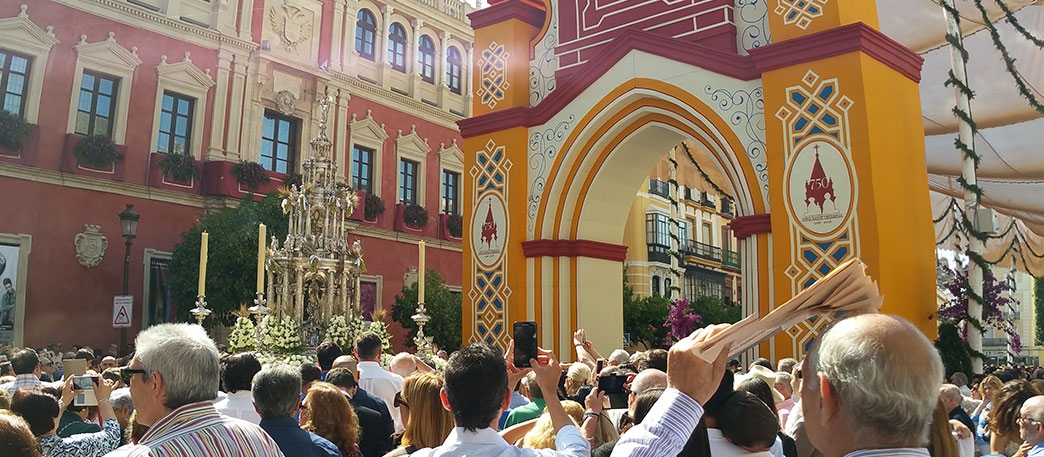Experience Corpus Christi in Seville
Corpus Christi is one of the main religious festivities in Seville and one of the most important in Spain. We invite you to know the history of this tradition and the way of living it in Seville.
Corpus Christi is one of the main religious festivities in Seville and one of the most important in Spain. We invite you to know the history of this tradition and the way of living it in Seville.
The feast of Corpus Christi has a great tradition and many centuries of roots in the city of Seville. It is celebrated sixty days after Easter Sunday, always coinciding on Thursday. This traditional Feast of the Catholic Church starts in the late Middle Ages and is dedicated to the Sacrament of the Eucharist, the Body and Blood of Christ, in its representation by means of bread and wine.
The Corpus Christi procession is the great public Sacramental act of the city; for a few hours, God is present in the streets of Seville. It is, therefore, for the Catholics of Seville, one of the most important manifestations of religiosity, faith and respect.
At dawn on Corpus Christi day, there is a great atmosphere of jubilation around the Cathedral, being one of the most radiant mornings in the festive calendar of Seville. The bells of the Giralda ring incessantly, even more when the Custody leaves the Cathedral to announce that God is in the street.
Entire families in their best clothes look for a corner not to miss this procession. The streets and squares are carpeted with aromatic plants (sedge and rosemary) and from the night before they are decorated with their best clothes. On balconies, shop windows, doorways and churches, altars are erected with Eucharistic and Marian religious motifs alluding to this feast.

As night falls on the eve of Thursday in Seville there is a festive atmosphere. The city takes to the streets to admire the ephemeral altars that are installed in what will be the route of the procession, highlighting the decoration of the Plaza de San Francisco, next to City Hall, where two large arches of ephemeral architecture (with motifs alluding to churches and monuments of the city) and a large altar with the image of the Virgen de la Hiniesta Gloriosa (patron saint of the City of Seville) are mounted.
Discover the different covers of the Corpus and complementary information in the following link: